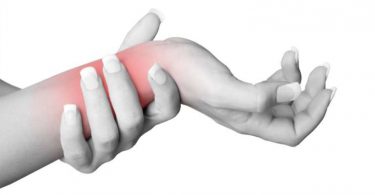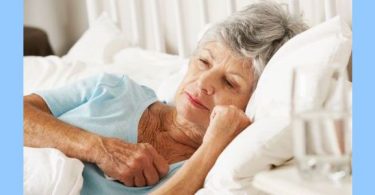What was interesting on this case was the fact, that this woman approached me to be treated for an eruption. However, it turned out that there were other things which needed to be addressed.
She was complaining about an eruption which she had had for the past 7 years. It was only at the upper part of her back (3). It consisted of red pimples (2) and it was itching (2), better after scratching (3).
When I asked her what had happened before the eruption appeared, she told me that she had been diagnosed with ulcerative colitis and started taking medication for it (Salofalk – Mesalazine). I looked at the drug leaflet and found eruptions with itching as one of its known side effects there.
From that point, I stopped being interested in the eruption as this was not a natural symptom of her defence mechanism. I told her that as long as she needs to take her medicine, we cannot do anything about her eruption, but we could try to do something about the colitis and if we are very lucky, she might be able get off of Salofalk.
I found out that the colitis had started with blood in her stool.(2) The blood was bright red (3) and there was a bit of mucus too (2). Since she started taking Salofalk, her stool had been normal. She had never had a diarrhoea (even before Salofalk).
She did not like to be in the sun (3) and she had eruptions from sun (3) – different from the ones on her back. She had had this already before colitis (for the past 10 years). She had two children – 11 and 13. She did not like heat in general (3).
She tended to wake between 3-4 a.m., sometimes at 2 a.m. (2) She usually had thoughts about her work when she woke up and could not sleep for about one hour.(2) It was quite dependent on her work load. She had had it for the past 5 years.
She was restless and industrious. (3) She could not rest and constantly had to do something.(3) She had a feeling that she was under constant stress.(2) She had aversion to meat (2), which lay in her stomach (1) and aversion to the smell of fish (3) – she could eat them if they did not smell like fish. Compared to other people, she was not particularly fond of sweets (2).
She did not tolerate alcohol (2). She felt drunk long after even if she drank a small amount and she had headaches after alcohol (2). The headaches were usually right-sided above right eye (2) and were worse from motion (1) and stooping (3). They were throbbing (3).
She was thirstless (2) – in winter she would only drink about half a litre a day. In summer a bit more.
Although she did not like heat, she had cold extremities (2). She did not tolerate tight clothes around her neck (2), they made her feel suffocated. She had lower blood pressure [106/60], but rapid pulse [around 80]. She was worse after afternoon sleep.(2)
She got angry easily.(2) The anger came and went suddenly.(3) She cursed during anger.(2) She was fastidious about cleaning her house because of germs and dirt.(2) She had had this for her whole life as well as disgust when other people were breathing at her from a close distance.(2)
She had had a fear of spiders (3), dark (1) and narrow places (2) – for her entire life. She was very obstinate and followed her goals.(2) For the past 9 months, she had had a tennis elbow.
Observation: Unusually robust and muscular for a woman.(3)
Acute diseases: She only got mild colds with slightly raised temperature once a year. She used to get otitis and tonsillitis in childhood.
Family medical history: Mother: hypertension, joint pains. Father: arrhythmias at later age
Analysis of the case:
This case shows that we have to keep in mind that in homeopathy we cannot choose what we want to treat, or in what order we want the complaints to go away. It is the nature of the defence mechanism of the organism which decides what will be treated first.
With a homeopathic remedy, we only stimulate the organism to function better and we make the defence mechanism stronger, more effective. It then decides on its own what needs to be addressed first. From the experience and according to laws of nature, it is always the deepest and most serious pathology which improves first.
In this case, the pathology is distributed on the physical and emotional level. On the physical level, we can find inflammation of intestines (colitis), headaches, eruptions from sun and tennis elbow. On the emotional level, there is easy irritability, restlessness and industrious character.
There are no significant genetic predispositions in the family. The fact that the patient does not get fevers during acute diseases is not favourable and it shows that the immune system is weak.[1]
Selection of symptoms:
Peculiar symptoms:
- eruptions from sun (3)
- sleeplessness from worries (2), waking at around 3-4 a.m. (2)
- restless, industrious (3)
- aversion to sweets (2)
- aggravation from alcohol (2), headaches after alcohol (2)
- right-sided (2) throbbing headaches (3), above right eye (2), worse from stooping (3) and motion (1)
- intolerance of thigh clothing around the neck (2)
- low blood pressure with rapid pulse
- afternoon sleep agg. (2)
- irritability (2) with anger coming and going away suddenly (3)
- obstinate (2)
- robust muscular constitution (3)
Intense symptoms:
- blood (3) and mucus in stool (2)
- bright red blood in the stool (3)
- general aggravation from sun (3) and heat (3), cold extremities (2)
- aversion to smell of fish (3), to meat (2)
- thirstless (2)
Possible relevant rubrics to use in this case:
Here is a list of relevant rubrics which cover the peculiar and intense symptoms of the case. It is by no means a balanced repertorisation, but rather a list of possible rubrics to use. I never use such a large number of rubrics in practice. The rubrics come from Synthesis repertory.[2]
SKIN – ERUPTIONS – sun; from
SLEEP – SLEEPLESSNESS – cares; from
SLEEP – SLEEPLESSNESS – night – midnight – after – 3 h – after
SLEEP – SLEEPLESSNESS – night – midnight – after – 4 h – after
MIND – RESTLESSNESS
MIND – INDUSTRIOUS
GENERALS – FOOD and DRINKS – sweets – aversion
GENERALS – FOOD and DRINKS – alcoholic drinks – agg.
HEAD – PAIN – spirituous liquors – from
HEAD – PAIN – Sides – right
HEAD – PAIN – pulsating pain
HEAD – PAIN – Forehead – Eyes – Above – right
HEAD – PAIN – stooping – agg.
HEAD – PAIN – motion – agg.
EXTERNAL THROAT – CLOTHING agg.
GENERALS – HYPOTENSION
GENERALS – PULSE – frequent
GENERALS – SLEEP – after sleep – afternoon – agg.
MIND – IRRITABILITY
MIND – ANGER – sudden
MIND – OBSTINATE
GENERALS – VIGOR
STOOL – BLOODY
STOOL – MUCOUS
GENERALS – SUN – exposure to the sun
GENERALS – WARM – agg.
EXTREMITIES – COLDNESS
NOSE – SMELL – acute – fish
GENERALS – FOOD and DRINKS – meat – aversion
STOMACH – THIRSTLESS
Differential diagnosis of the most probable remedies:
Natrum muriaticum is one of the main remedies for general aggravation from sun, eruptions from sun and sleeplessness from worries. It is a very important remedy for right sided headaches. Natrum muriaticum is also aggravated by heat. It may have aversion to fish (although mostly desire) and sweets. The remedy has been confirmed to cure colitis.[3] However, the patient is thirstless and this remedy has intense thirst as a keynote. This represents a contraindication.
Natrum carbonicum has even stronger aggravation from sun than Natrum muriaticum and it is also in the rubric for eruptions from sun. It has been reported to be successful in cases of colitis.
Apis mellifica has aggravation from heat and lack of thirst as keynotes. Industrious nature is another keynoter of this remedy. Apis can be very irritable and restless. It can be found in the rubric SKIN – ERUPTIONS – sun; from. The addition in the repertory is from T.F. Allen.[4] However, I was not able to find the confirmation for it in the Materia medica.
Pulsatilla has aggravation from sun, headaches from sun and lack of thirst as a keynote. Blood and mucus in stool can be confirmed in this remedy too. There are no other strong confirmations for this remedy in the case.
Lachesis covers aggravation from sun, headaches from sun and intolerance of tight clothes around neck as keynotes. It also covers irritability and anger. Lachesis patients tend to be temperamental. The remedy covers headaches from sun and its headaches are of throbbing character. However, it is a left-sided remedy and its headaches are predominantly left-sided. It can be found in the rubric for headaches after alcohol, which is not surprising considering that it is a remedy suitable for circulatory problems. Lachesis is a haemorrhagic remedy, but its blood is typically dark.
Belladonna belongs to the remedies which are the most sensitive to sun. It covers headaches from sun as a keynote. Headaches of Belladonna fit the modalities of the patient’s headaches very well. Belladonna has right-sided throbbing headaches as a keynote. They tend to occur above right eye and extend to the back of the head (or the opposite direction) in this remedy.
Aggravation from stooping (or bending forward) is also well confirmed in Belladonna. Aggravation from motion is a general keynote of this remedy. There are two main remedies for headaches provoked by alcohol. One of them is Belladonna and the other one is Glonoinum.
Belladonna has lack of thirst as another keynote. It is interesting that the patient has cold extremities which is typical for Belladonna, especially in combination with internal heat. This remedy also covers intolerance of tight clothing around neck and blood and mucus in stool.
Belladonna can be very irritable and the sudden onset and subsiding of anger is typical for this remedy. On top of that, Belladonna constitutionally fits robust, vital and temperamental people. The remedy has an affinity to the colon (esp. transverse colon) and it has been reported to treat colitis too.
Belladonna can be restless, industrious (because it is full of energy) and also obstinate. Low blood pressure is rather opposite from what we would expect in a patient needing Belladonna, but I would not consider this a contraindication. Rapid pulse, on the other hand, is typical for Belladonna.
Regarding the patient’s sleeplessness and waking in the early morning, the only rubrics I found to be relevant and containing Belladonna at the same time are SLEEP – SLEEPLESSNESS – thoughts – business, of and SLEEP – SLEEPLESSNESS – thoughts – activity of thoughts; from. However sleeplessness in general is very well confirmed in Belladonna and it is in the third degree in the rubric SLEEP – SLEEPLESSNESS.
Mercurius solubilis is a remedy one should think of in every case of ulcerative colitis or other bowel inflammatory disease as it covers very well the local symptoms of such diseases. The same is even more relevant for Mercurius corrosivus. Mercurius solubilis has aversion to sweets as a keynote. It also covers irritability. However, it cannot be supported by other keynotes in this case.
Colchicum is a very important remedy for bowel inflammations like ulcerative colitis or Crohn’s disease. Aversion to smell of fish is one its biggest keynotes. It is an irritable remedy. However, it is aggravated by cold weather.
Selection of the remedy:
It is quite obvious only from looking at the amount of description under each remedy in the differential diagnosis that there is one remedy which really stands out from the others. The remedy is Belladonna. It covers most keynotes in the case, but also generalities, mental symptoms and local symptoms.
No other remedy is supported by so many keynotes in the case and Belladonna even seems to cover the patient’s bodily constitution, which is rare for an adult patient. A real constitutional remedy (meaning the one that covers the patient’s inborn bodily and mental constitution) is not usually needed as a first prescription in a case of an adult because there are usually several layers on top of that and it takes time to work up to the basic constitutional layer.
Although there are remedies which cover some peculiar symptoms (Colchicum) or local symptoms of the colitis (Mercurius corrosivus) better, they would not have a deep curative effect as they do not cover the overall picture of the case.
From the frequency and character of her acute diseases, we can tell that the level of health of this patient is low.[5] That is why I opted for the lower potency 30C. The other reason I chose this potency is that I was planning to dose the remedy daily in case one-day-split-dose does not produce a reaction.
The medication she was taking (Salofalk) should not interfere with the action of the homeopathic remedies, but a particular patient can be more sensitive to it. 30C is a potency high enough to produce a curative reaction if the remedy is correct, and in theory, it should do less harm than, let us say, 200C if the remedy is not correct.
Prescription: Belladonna 30C split dose (3 doses in one day only)
Outcome of the treatment:
Follow up #1 – two months after the remedy
After administration of the remedy, the patient had mild diarrhoea for two days. On the third day, she developed a fever fluctuating between 38,5°C – 39°C, which was unusually high for her. She had not had such a fever for many years. She also had general malaise, body pains, cough and sore throat. The episode subsided on its own in five days.
She has a bit more energy (10-15% more). Her sleep has improved. The tennis elbow pains are also better. Regarding her colitis, she cannot tell the difference because her medication is suppressing her symptoms.
Evaluation of the reaction:
There was an initial aggravation in the form of diarrhoea which appeared in spite of taking Salofalk. However, what should mainly attract our attention is the appearance of high fever after many years. This is a very good sign and according to the theory of Levels of health by Prof. George Vithoulkas5 it means the remedy was correct. It shows that the defence mechanism of this patient has become stronger and it should therefore have more capacity to cure the complaints by its own means.
The improvement of the overall energy, although not significant, is another sign that the remedy was most probably correct. Improvement of sleep could indicate deep changes in the organism. Possible change in her main problem, the colitis, cannot be assessed as the patient is asymptomatic due to her allopathic medication.
Considering all the factors mentioned above, the best strategy at this point is to wait. However, the patient agreed with trying to withdraw Salofalk (under the supervision of her gastroenterologist) to see if there is any change in the colitis.
Follow up #2 – six months after the remedy
The patient has not been taking Salofalk for four months and has not experienced any gastrointestinal complaints. Her stool is completely normal and she has a bowel movement once a day. The eruption on her back gradually disappeared about 3 months ago.
Sleep keeps improving. She sleeps deeper and wakes much less. Waking at 3 or 4 a.m. only occurs about once every three weeks. She has more energy and tolerates more physical exertion than before treatment. She has been doing more sports recently and it makes her feel good. She manages to do more work. Before treatment, she often had a feeling of not managing things on time.
She still has cold feet, but is not bothered by it anymore. Her blood pressure has risen to 125/75. Her knees hurt less than before treatment. She feels the tennis elbow only very slightly, it is definitely better than the last time. She feels calmer and gets angry less often. The anger is not as explosive as before.
The follow up of the case is now 5 years and she never needed another remedy.
Evaluation of the reaction:
Further development of the case confirms that the remedy was correct. Symptoms of colitis have not come back after withdrawal of Salofalk, the patient has more energy, is psychologically better and even her blood pressure normalised.
Discussion:
Cases like this prove that homeopathy is a deeply acting powerful therapeutic modality which is able to treat chronic conditions otherwise considered incurable by conventional medicine. This was a mild case of colitis and only one remedy was needed to achieve a complete cure, but it is still impressive that homeopathy can cure such a diagnosis with a one-day dose of the remedy. There are more serious types of colitis which need more remedies in a correct order to be completely reversed.
[1] VITHOULKAS, G., Levels of Health: The Second Volume of The Science of Homeopathy. Athens, Greece: International Academy of Classical Homeopathy, Center of Homeopathic Medicine, S.A., 2017. ISBN: 978-6188331204
[2] SCHROYENS, F. The Essential Synthesis 9.2E. London: Homeopathic Book Publishers, 2007. ISBN: 978-0-9557151-0-5
[3] MORRISON, R., Desktop guide to keynotes and confirmatory symptoms. Hahnemann clinic publishing. Grass Valey, California, USA, 1993. ISBN: 978-0963536808
[4] SCHROYENS, F. The Essential Synthesis 9.2E. London: Homeopathic Book Publishers, 2007. ISBN: 978-0-9557151-0-5
[5] VITHOULKAS, G., WOENSEL, E. The Levels of Health: The Second Volume of The Science of Homeopathy. Athens, Greece: International Academy of Classical Homeopathy, Center of Homeopathic Medicine, S.A., 2010. ISBN: 978-9-6087-4294-9




